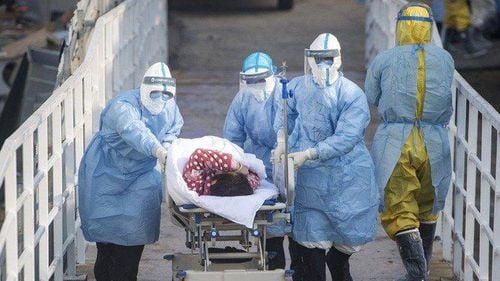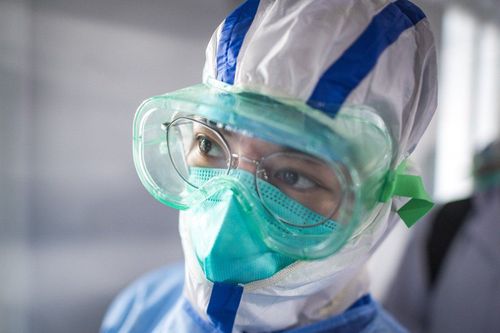This is an automatically translated article.
Ebola virus disease (EVD) is a deadly disease with frequent outbreaks, occurring mainly in the African continent. EVD most commonly affects humans and primates (such as monkeys, gorillas, and chimpanzees). The Ebola virus is feared because of its quick entry and damage mechanism and its ability to spread persistently.
1. Causes of Ebola
Ebola virus outbreak is caused by infection with one of the following strains of Ebola virus:
Ebola virus (species Zaire ebolavirus ) Sudan virus (species Sudan ebolavirus ) Forest virus (species Taï Forest ebolavirus , formerly Côte d'Ivoire ebolavirus ) Bundibugyo virus (species Bundibugyo ebolavirus) Reston virus (species Reston ebolavirus) Bombali virus (species Bombali ebolavirus) Of these, only four strains (Ebola, Sudan, Forest and Bundibugyo viruses) cause serious illness in humans. Reston virus is known to cause disease in primates, but not in humans. Scientists have not yet determined whether the Bombali virus, recently discovered in bats, causes disease in both animals and is capable of causing disease in humans.
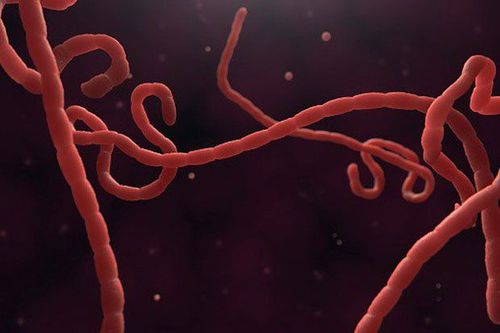
Hình ảnh Virus Ebola
2. Where did the Ebola outbreak occur?
The Ebola virus was first discovered in 1976 near the Ebola River in what is now the Democratic Republic of the Congo. Since then, the virus has infected many others, leading to outbreaks in several African countries. Scientists don't know where the Ebola virus came from. However, based on the nature of similar viruses, they believe that animal, bat or primate (chimp, apes, monkeys, etc.) viruses are the most likely source. Animals infected with the virus can transmit it to other animals, such as apes, monkeys, and humans.
Initially, the virus spread to humans through direct contact with the blood, body fluids, and tissues of animals. The Ebola virus is then spread to others through direct contact with the bodily fluids of someone who is sick or has died from EVD. This can happen when a person touches infected bodily fluids (or objects that carry the virus) and the virus enters through a cut in broken skin, through the eyes, nose, or mouth. Also, you can get the virus through sex with someone who has EVD or has recovered from EVD. The virus can survive in some body fluids, such as semen, after an infected person has recovered.
Ebola virus survivors may experience some side effects after recovery, such as fatigue, muscle aches, eye and vision problems, stomach upset.
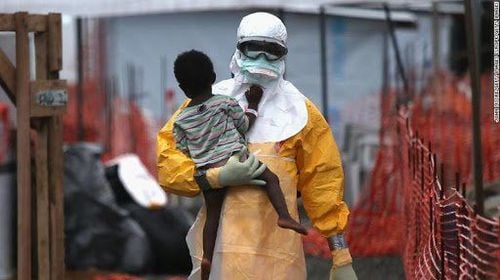
Cộng hòa Dân chủ Congo nơi đầu tiên phát hiện dịch Ebola
3. Signs of a patient with Ebola virus disease
Symptoms can appear anywhere from 2 to 21 days after exposure to the virus, with an average of 8 to 10 days. The course of the disease usually progresses from symptoms such as fever, aches and pains, and then progresses to more serious symptoms such as diarrhea and vomiting.
Signs and common in people infected with Ebola virus include:
Fever Pain and aches, such as severe headache, muscle and joint pain, stomach (stomach) pain Tired body Vomiting and diarrhea Abdominal (stomach) pain Unexplained bleeding, bleeding or bruising
Other symptoms may include red eyes, skin rash and hiccups, which are common in the late stages of the disease.
Many common illnesses can have EVD-like symptoms, including influenza (flu), malaria or typhoid fever.
EVD is a rare but very serious and often fatal disease. Recovery from EVD depends on supportive clinical care and the patient's immune response status. Studies show that Ebola virus survivors have antibodies (proteins made by the immune system that identify and neutralize the invading virus) that can be detected in their blood for up to 10 years after recovery return. Survivors are thought to have some protective immunity to the type of Ebola that made them sick.
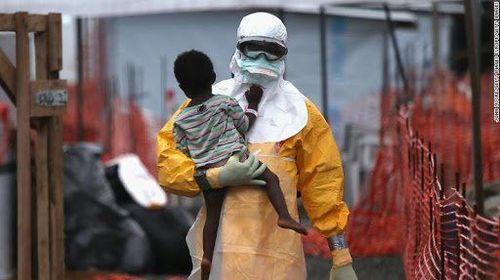
Bệnh nhân mắc bệnh do virus Ebola xuất hiện triệu chứng đau bụng
4. Prevention of Ebola disease
In the United States, Ebola virus disease (EVD) is a very rare disease that occurs only due to cases acquired in other countries, with eventual human-to-human transmission. EVD is most common in parts of Africa, with outbreaks frequently occurring in humans. In these areas, the Ebola virus is thought to circulate at a low rate in some animal populations. Often cases of Ebola virus disease follow contact with infected animals, which can then lead to Ebola outbreaks where the virus spreads between people.
When living in or traveling to an area where the Ebola virus is present, you should take the following measures to protect yourself and prevent the spread of EVD.
Avoid Contact with blood and body fluids (such as urine, feces, saliva, sweat, vomit, breast milk, semen, and vaginal fluids) of people who are sick. Avoid sex with a recovered EVD until it is confirmed that there is no virus in the semen. Avoid items that may have been contaminated with the blood or bodily fluids of an infected person (such as clothing, bed linen, needles and medical equipment). Avoid burial or burial rites that require the disposal of the body of someone who has died of EVD. Do not use raw meat that has not been clearly identified. Recommended video:
Instructions on how to properly wash your hands to prevent disease transmission
These same precautions apply when living in or traveling to an Ebola-affected area. After returning from an Ebola-affected area, you will need to monitor your health for 21 days, and you should immediately report your condition to a medical facility if you develop symptoms of EVD.
The US Food and Drug Administration (FDA) approved the Ebola vaccine rVSV-ZEBOV (trade name "Erbobo") on December 19, 2019. The rVSV-ZEBOV vaccine was used. a single dose and has a prophylactic effect only. This is the first FDA approval of a vaccine for the Ebola virus.
Source: CDC
MORE:
How does Ebola virus spread? Ebola virus: Are the causes, symptoms, diagnosis and treatment of 2019-nCoV the same as the viruses that cause MERS and SARS?






